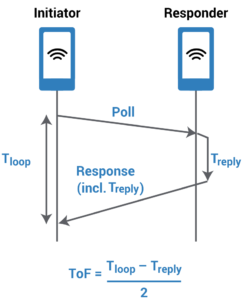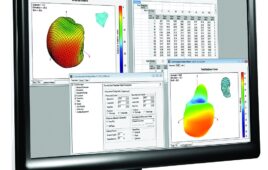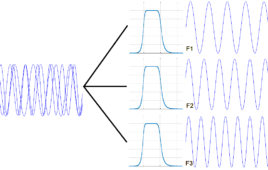CEVA’s Riviera Waves IP lets you add an Ultra-Wideband digital PHY and hardware/software MAC layer to an IC design for use in low-power devices.
Ultra Wideband (UWB), that reborn standard for short-range wireless communication and location detection, is finding its way into smartphones and IoT devices. With RivieraWaves UWB intellectual property (IP) from CEVA, you can add the digital portion of a UWB PHY and the Media Access Control (MAC) protocol layer to an SoC, FPGA, or other devices.

Figure 1. UWB calculates distance and location by measuring time of flight of a 2-ns pulse. Source: FiRa Consortium.
UWB, based on IEEE 802.15.4z-2020, uses pulses to measure time-of-flight (ToF) and angle-of-arrival, from which a processor can calculate distance and position. UWB sends 2 ns pulses with 500 MHz bandwidth that can provide 2-ps timing accuracy, good enough to measure location to within a few centimeters. RivieraWaves UWB IP also complies with FiRa Consortium specifications (Figure 1). UWB can also send and receive data at 27 Mb/s if needed, but its primary purpose is for distance and location detection.
Achieving the 2-ps timing accuracy requires a hardware implementation that DSP can’t achieve. Thus, packet timestamping is performed in hardware. Furthermore, the 802.15.4z standard specifies a more complex PHY than previous versions of UWB making it difficult, if not impossible, to hack.
In addition to providing the digital PHY and MAC hardware layers, RivieraWaves UWB includes portable MAC-layer software, with hardware offloading for encryption/authentication, key management, autonomous ACK handshaking, and other real-time critical operations. The MAC software (Figure 2) can run on any CPU, including Arm, RISC-V, and CEVA-BX1 processors.

Figure 2. RivieraWaves UWB IP from CEVA lets you add PHY and MAC hardware plus MAC software to an IC design. The MAC software can run on any processor.
Engineers can combine RivieraWaves UWB with RivieraWaves Bluetooth to achieve data transmissions and positioning over longer distances, albeit with less accuracy when using Bluetooth. “Bluetooth Low Energy can estimate range,” said Dugand, “but is more susceptible to interference than UWB.”
RiveraWaves UWB doesn’t provide the radio IP, but it does provide a radio interface that lets you deploy your own own RF technology or you can use RF IP from CEVA’s partners.
RivieraWaves UWB supports ultra-low power applications for products such as tags used in pinpoint asset finding, secure digital key functionality for door locks, real-time location services (RTLS), and payment systems. Dugand also envisions UWB replacing near-field communications (NFC) technology for payment systems.




Tell Us What You Think!